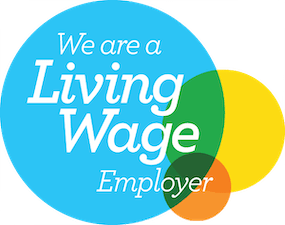These takeaways highlight the main themes running through the panel discussions on the day. Some of the insights may contradict each other, but that’s the nature of debate between the key stakeholders in this market!
1. The SEC no action letter ending means you have to plan for the worst
In July 2022 the SEC announced that the no action letter that has allowed European asset managers to pay for US broker research in cash would not be renewed next summer. This means from July 2023 there is no solution to deal with these two opposite regulatory regimes – one where you have to pay for research with a trade and one where you can’t. It is not clear much can be done by the industry in the eight months that remain to fix this.
The possible scenarios are:
- The SEC could reverse its decision and renew the no action relief
- Brokers could register as Investment Advisors and distribute research through those entities
- The SEC could create a “lite” version of the Investment Advisers Act of 1940 to make it easier for brokers to register
- European firms could potentially use an adapted RPA (Research Payment Account) model to comply with US rules, and either return to charging end investors for research or alternatively reimburse clients after the commission has been paid
- European asset managers could pay for US research through European operations
European asset managers have no interest in changing how they pay or fund the external research they use. On the other hand, brokers have many concerns about the RIA (Registered Investment Advisor) route – namely restrictions on principal trading, fiduciary requirements and uncertainty on what can be delivered through the RIA.
After a recent call with industry representatives, the SEC acknowledged the complexities and asked the industry to come back with pain points – the industry response to this will probably be “please extend this by a couple of years so we can really get on with establishing a permanent solution”.
Most of the audience thought that the SEC will not reverse its decision, and that European asset managers will end up paying for global research relationships exclusively through brokers’ European entities wherever that is possible. There is risk here for brokers as the SEC is often vigorous at asserting its jurisdiction, and firms will have to make risk-based judgments on where they can get comfortable due to lack of guidance.
What do you need to do now? If you’re an asset manager with European operations then figure out asap what your brokers plan to do – if some key US providers don’t want to register as RIAs and don’t have a European entity then check how crucial they are to your investment teams’ processes. If you are a broker then prepare for the buy side to not change the way they pay or fund their research budget, and then weigh up either foregoing the European revenue, taking payments from a European entity or registering as an RIA. (None of which look like attractive options we know!)
2. Big buysiders are doing it for themselves
The theme of the largest asset managers taking more control of their investment processes continues. Whether it’s going direct to companies for corporate access, taking in ESG and alt data inputs directly into an internal data-driven process, or dealing with expert networks directly for primary data, the longer term outlook points to a future where big asset managers go to the sell side for their areas of excellence rather than to underscore their investment processes.
This contrasts with the short term trend to more concentrated research budgets, with the top few providers gaining most of the budget – however research budgets keep going down and data budgets keep going up, which may also echo the longer term theme.
If you are a smaller asset manager, however, you are in a completely different position. You are competing for corporate access, you need to lean on the sell side and whilst you can look for differentiated data sets and niche providers you have to be selective. Where you have full service agreements with brokers you may be more keen to embrace their new services and products, but you are always fighting to be prioritized due to your size and wallet.
3. ESG just got serious
ESG is about greed and fear. Greed about AUM growth, fear over cost and regulation. Standardization is the goal because it will make everyone’s lives easier and encourage comparability and consistency in data and research. The IFRS sustainability disclosure standards will help with this. But no matter how much regulation there is, if it is not enforced, it won’t change anything. Asset managers say they are ready for SFDR next year, but “ready” is a relative term.
Morningstar has classified 6,500 ESG funds in their database, of which about 7,000 were not Article 8 or 9 funds the year before, so there is a huge rush of rebranding. But the UK has launched a thematic review of ESG funds to assess whether managers have complied with the “Dear Chair Letter” which went out last year basically saying “we expect your ESG claims to stack up and we expect that your ESG funds would be sustainably resourced”. All the regulations, from the FCA and the SEC in the US, are about forcing managers to go down the route of “what is it the fund is doing and is it sustainably resourced?”
Investor interest has evolved from exclusions (negative or positive screening) to integration and engagement. It is not about excluding specific companies anymore but now we take into account their societal and environmental impact instead of it being black and white, good vs bad.
ESG inputs still come out of both the research budget and the market data budget.
The market for ESG research and data has gone up 25% in the past 12 months and that continues to be the trend. Client reporting is getting bigger, especially with the SFDR coming into effect. There’s also big growth in private equity demand for ratings and assessments. Regarding supply, two or three incumbent data providers remain the obvious choice because they are entrenched in the system, but demand will rapidly expand and evolve as firms’ processes mature and their requirements change.
4. Research valuation got mature just in time for a tough negotiation cycle, but budgeting policies are varied and still changing
There’s no one way that the buy side evaluates the street, but for all the methods the quality of data (vote, interaction etc.) is paramount. This has dramatically improved, and we’re seeing much better capture of comments and feedback per analyst in the vote, and far less disagreement about interaction data.
The technology has become more sophisticated, and asset managers are working to ensure that interaction data is being checked and verified. While communication is much better, there are still differences of opinion as to what constitutes “bespoke” research or models, or what is included in “platform access”! Agreements have to become more specific to avoid this.
If you are a large long-only, the trend is to have research and data budgets become more integrated and aligned – to the extent that investment professionals may have to forgo some research if they want more data, and vice versa. At other firms the budgets will operate completely independently, but with most firms in Europe it’s all coming out of the P&L anyway!
5. Tools now exist that allow providers to continue to control their relationships while also helping prospects and clients discover them
The importance of “the relationship” in this industry isn’t going to change. MiFID II tested whether research would become more liquid and more commoditised, and what’s become clear is that salespeople matter, relationships matter and providers do not want to endanger that. But growth in this market will be tough for providers that don’t ensure that their work can be found easily, especially when a fund manager’s needs are occurring in their areas of comparative advantage.
Virtual interactions ensure providers can also access their client bases more cheaply. But while clients are getting the same value through virtual meetings with analysts now, for the providers they miss out on understanding their clients better and the context within which they are delivering their products. So you still need to get onto a plane as a provider at least some of the time!
A big thank you once again to all our speakers, and thank you to our attendees for their engagement and support. See you all in New York on June 14th!








